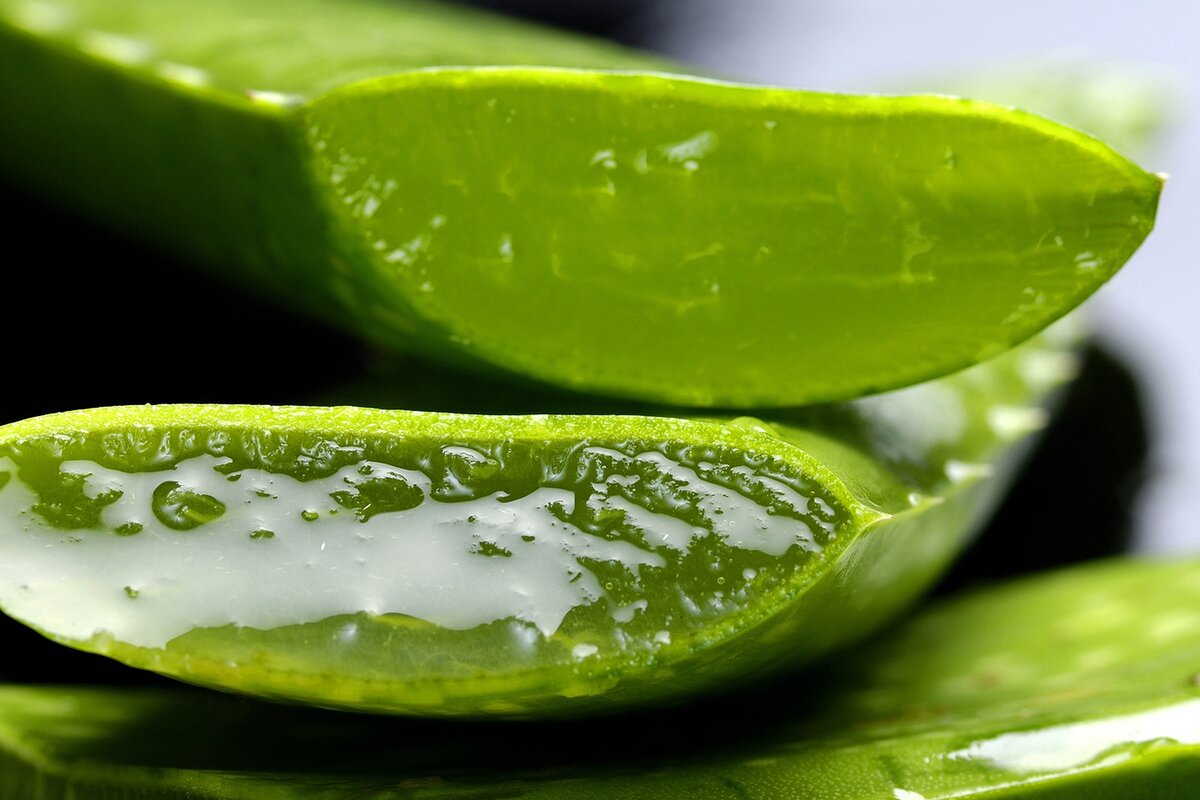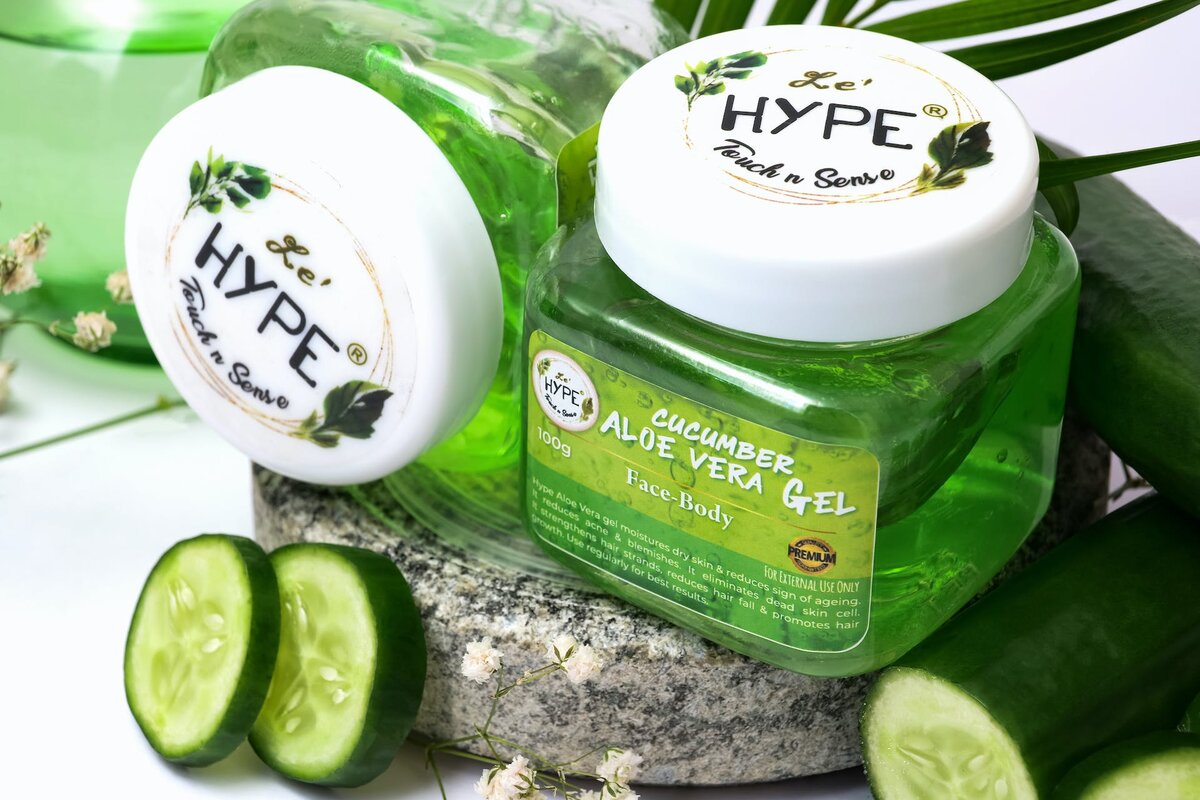Aloe vera gel, a soothing natural remedy, has been widely embraced for its healing properties. Harvested from the succulent leaves of the aloe plant, this clear gel is commonly used to relieve sunburns, moisturize skin, and provide relief from various skin conditions. A mainstay in many households’ first-aid kits and beauty regimens, people often wonder, ‘does aloe vera gel expire,’ given its range of applications from topical treatments to being an ingredient in drinks and dietary supplements. Understanding its uses lays the foundation for recognizing the importance of its shelf life and proper storage.
On this page:
Does Aloe Vera Gel Expire? Understanding Its Shelf Life
Aloe vera gel, widely recognized for its soothing and healing properties, is a staple in many medicine cabinets and skincare routines. But even this plant-based powerhouse has a time limit. The shelf life of aloe vera gel depends on several factors, including the form of the gel, its purity, and the preservatives used in its formulation.
Typically, store-bought aloe vera gel that contains preservatives has a longer shelf life, usually around two to three years from the date of manufacture. These preservatives help inhibit the growth of bacteria and fungi, which can spoil the gel. It’s essential to check the expiration date on the packaging for the most accurate estimate of its shelf life.
On the other hand, pure aloe vera gel extracted directly from the plant has a much shorter shelf life. When fresh, it can be stored in the refrigerator for about a week, and you might be able to push this to a month if you incorporate natural preservatives such as vitamin C or E.
Regardless of the type, once opened, aloe vera gel’s exposure to air, light, and heat can accelerate the breakdown of its active ingredients. This means that opened aloe vera gel will have a reduced shelf life compared to an unopened product. To maximize its longevity, you should keep the opened gel in a cool, dark place and ensure the lid is tightly sealed after each use.

While aloe vera gel does last quite a while, it’s vital to remember that its healing properties can diminish over time. The effectiveness of the gel is at its peak when it’s fresh. As time passes, the beneficial compounds in aloe vera gel can degrade, reducing its potency.
Recognizing When Does Aloe Vera Gel Go Bad
The first indicator is a change in color. Fresh aloe vera gel is typically clear or slightly yellowish, but if it takes on a pinkish hue or becomes cloudy, it’s a signal that the gel is past its prime.
Another sign is the texture. Aloe vera gel should be smooth and slightly viscous. If it has become watery or has lumps, it’s likely not safe to use. This change in consistency can be a result of bacterial growth, which occurs more readily when the gel has expired.
The smell of the gel can also alert you to its condition. Aloe vera gel should have a mild, fresh, and plant-like scent. If you notice a strong, unpleasant, or sour odor, this is a clear indication that the gel has spoiled and should not be applied to the skin.
In addition, any signs of mold growth or the presence of small bubbles within the gel are warnings that the product has deteriorated and could potentially cause skin irritation or an allergic reaction if used.
If the packaging of the aloe vera gel is compromised, such as a broken seal or a damaged container, this too can lead to the degradation of the product. Exposure to air, light, or contaminants can accelerate the expiration process, making these physical signs an important aspect to watch out for.
Does Aloe Expire? Proper Storage Methods for Aloe Vera Gel
Aloe vera gel should be kept in a cool, dry place, away from direct sunlight. Exposure to heat and light can degrade the gel’s beneficial properties. A refrigerator is an ideal spot, as the cool temperature can help preserve the gel’s natural components, extending its usability.
The container housing the aloe vera gel also plays a vital role in its preservation. Opt for opaque containers over clear ones to shield the gel from light. Additionally, the container should be airtight to prevent oxidation, which can spoil the gel. Whenever the gel is used, make sure to close the lid tightly after each use to keep air out.

For those who have extracted aloe vera gel directly from the plant, it’s essential to use it quickly or store it correctly since it lacks preservatives. Place the fresh gel in an airtight container and refrigerate immediately to slow down the breakdown process. If the gel is purchased, you might question ‘does aloe expire,’ so it’s prudent to check the product’s instructions for any specific storage guidelines provided by the manufacturer.
Personal hygiene can contribute to the longevity of the gel. Use a clean spoon or spatula to scoop out the aloe vera gel rather than fingers, which can introduce bacteria and contaminants into the container. By following these storage tips, the shelf life of aloe vera gel can be maximized, ensuring that the soothing and healing properties of the gel are maintained for as long as possible.
The Difference Between Raw and Processed Aloe Vera
Raw aloe vera is sourced directly from the aloe plant. It’s the clear, gooey gel that seeps out when you cut a leaf open. This natural gel is packed with bioactive compounds, including vitamins, minerals, and amino acids beneficial for skin health and healing.
Processed aloe vera, on the other hand, has undergone various treatments to extend its shelf life and make it suitable for commercial products. These treatments may include pasteurization, which heats the gel to kill bacteria, and the addition of preservatives to prevent spoilage. Some processed gels also contain thickeners to improve texture and stability, as well as additional ingredients like fragrances or coloring agents to enhance the product’s sensory appeal.
The main difference between the two lies in their shelf life and stability. Raw aloe vera gel, being a fresh, natural product, is more prone to bacterial growth and can degrade quickly if not stored correctly — usually within a week or two. Processed aloe vera gel, with its added preservatives, can last much longer, often up to two years when unopened and stored properly.
While raw aloe vera is often considered more potent due to its natural state and concentration of active ingredients, its short shelf life can limit its practicality for regular use. Processed aloe vera, while potentially less potent due to dilution and the heating process, offers convenience and a longer shelf life, making it a more reliable option for routine skincare.
Freezing Aloe Vera Gel for Extended Use
Freezing aloe vera gel is a practical method to extend its shelf life beyond what is typically expected. When aloe vera gel is frozen, the low temperatures slow down the degradation process, thus preserving its beneficial properties for a longer period. To freeze aloe vera gel effectively, it should be placed in an airtight container or a sealable plastic bag designed for freezer storage. This helps prevent freezer burn and oxidation, which can diminish the gel’s quality.
For convenience, aloe vera gel can be portioned into ice cube trays before freezing. Once solidified, the aloe cubes can be transferred to a freezer bag, allowing for easy access and dosage control. These aloe vera gel cubes are particularly handy for soothing burns or skin irritations, as the cold from the frozen gel can provide additional relief.
The texture of aloe vera gel might change once frozen and thawed. The gel can become slightly grainy or less cohesive, but this does not affect its soothing properties. When ready to use, a single cube can be thawed at room temperature or by submerging the container in warm water.
It’s important to label the container with the freezing date, as even in frozen state, aloe vera gel should not be kept indefinitely. A general guideline is to use frozen aloe vera gel within six months for optimal quality. Once thawed, the gel should be used immediately and not be refrozen, as this can further degrade its natural components and reduce its effectiveness.
Handling and Storing Aloe Vera Leaves
After harvesting or purchasing aloe vera leaves, it’s recommended to use them quickly, but if you need to store them, here’s how to do it right.
First, if the leaves are dirty, rinse them under cool running water. Pat them dry gently with a clean cloth or paper towel to remove excess moisture, which can encourage bacterial growth. Once cleaned, place the aloe vera leaves in a dry, cool place away from direct sunlight. A common practice is to wrap the leaves in a cotton or linen towel, which allows the leaves to breathe and reduces the chance of moisture buildup.
For longer storage, the refrigerator is a suitable option. When refrigerated, aloe vera leaves can last for several weeks. It’s best to put them in the crisper drawer, which is designed to hold produce at an optimal humidity. Some prefer to place the wrapped leaves in a sealed plastic bag before refrigerating to prevent them from absorbing other odors and to maintain humidity levels.
Don’t freeze the whole leaves as this can damage the cell structure, which in turn can affect the quality of the aloe gel. If you have more leaves than you can use in a short period, consider extracting the gel and following appropriate storage methods for the gel itself, such as refrigeration or freezing.
The key to preserving aloe vera leaves is to mimic their natural environment as much as possible — cool, dry, and away from direct sunlight. With proper handling and storage, the leaves will stay fresh, ensuring you get the most benefit from the aloe gel when you’re ready to use it.
Aloe Vera Gel in Commercial Products vs. Homemade
There’s a significant difference between the commercial products you can buy at the store and the gel you can extract straight from the plant at home. Commercial aloe vera products often include preservatives that extend their shelf life, which means you can expect them to stay good for a longer period, typically one to three years if unopened. Once you break the seal, you may ask ‘does aloe vera gel go bad,’ and the answer is that these commercial gels can last anywhere from six months to a year when stored properly in a cool, dry place.
Homemade aloe vera gel, on the other hand, does not contain these preservatives and is much more perishable. The gel extracted from an aloe leaf will last about a week in the refrigerator, and you’ll need to watch for any changes in smell, color, or texture that indicate it’s time to toss it out. Because it’s more prone to bacterial and fungal growth, it’s crucial to store homemade gel in a clean container and keep it refrigerated.
While commercial gels are convenient and have a longer shelf life, some people prefer homemade aloe vera for its purity and the absence of added chemicals. It’s a trade-off between the natural quality and the convenience of longer-lasting products.
FAQs on Aloe Vera Gel Shelf Life and Usage
How long does aloe vera gel last once opened?
Aloe vera gel can last anywhere from one to three years once opened, depending on the preservatives used and storage conditions. If it contains pure aloe without preservatives, it should be used within a month.
Can you use expired aloe vera gel?
Using expired aloe vera gel is not recommended. While it may not always be harmful, its effectiveness can greatly diminish, and there’s a risk of skin irritation or infection if the gel has gone bad.
Does aloe vera gel need to be refrigerated?
Refrigeration is not necessary for all aloe vera gels, but it can extend the shelf life, especially for organic or preservative-free varieties. Check the label for specific storage instructions.
How can you tell if aloe vera gel is still good?
Aloe vera gel that is still good should be clear or slightly cloudy and have a clean, fresh smell. If it’s discolored, has a foul odor, or the texture has changed, it’s best to discard it.
Is it okay to apply aloe vera gel on your face every day?
Yes, it’s generally safe to apply aloe vera gel on your face daily. It’s soothing and hydrating, but as with any product, pay attention to how your skin reacts and adjust usage accordingly.
Can you freeze aloe vera gel?
Yes, you can freeze aloe vera gel. Freezing can prolong its shelf life, and it’s best to freeze it in an ice cube tray for convenient, single-use portions.
What happens if you use too much aloe vera gel?
Using too much aloe vera gel can sometimes lead to skin dryness or irritation due to its astringent properties. Always use it in moderation and observe how your skin responds.
Best Practices for Aloe Vera Gel Longevity
To maximize the benefits of aloe vera gel, it’s crucial to keep an eye on its shelf life and understand the best practices for storage. Always store aloe vera in a cool, dark place and use clean utensils to prevent contamination. If you’ve opted for raw aloe vera, remember that its shelf life is shorter, and consider freezing it for long-term use. For store-bought gels, check the expiration date and note any changes in texture, color, or smell. By following these simple guidelines, you can ensure that your aloe vera gel remains effective and safe for use, allowing you to enjoy its soothing properties whenever you need them.
